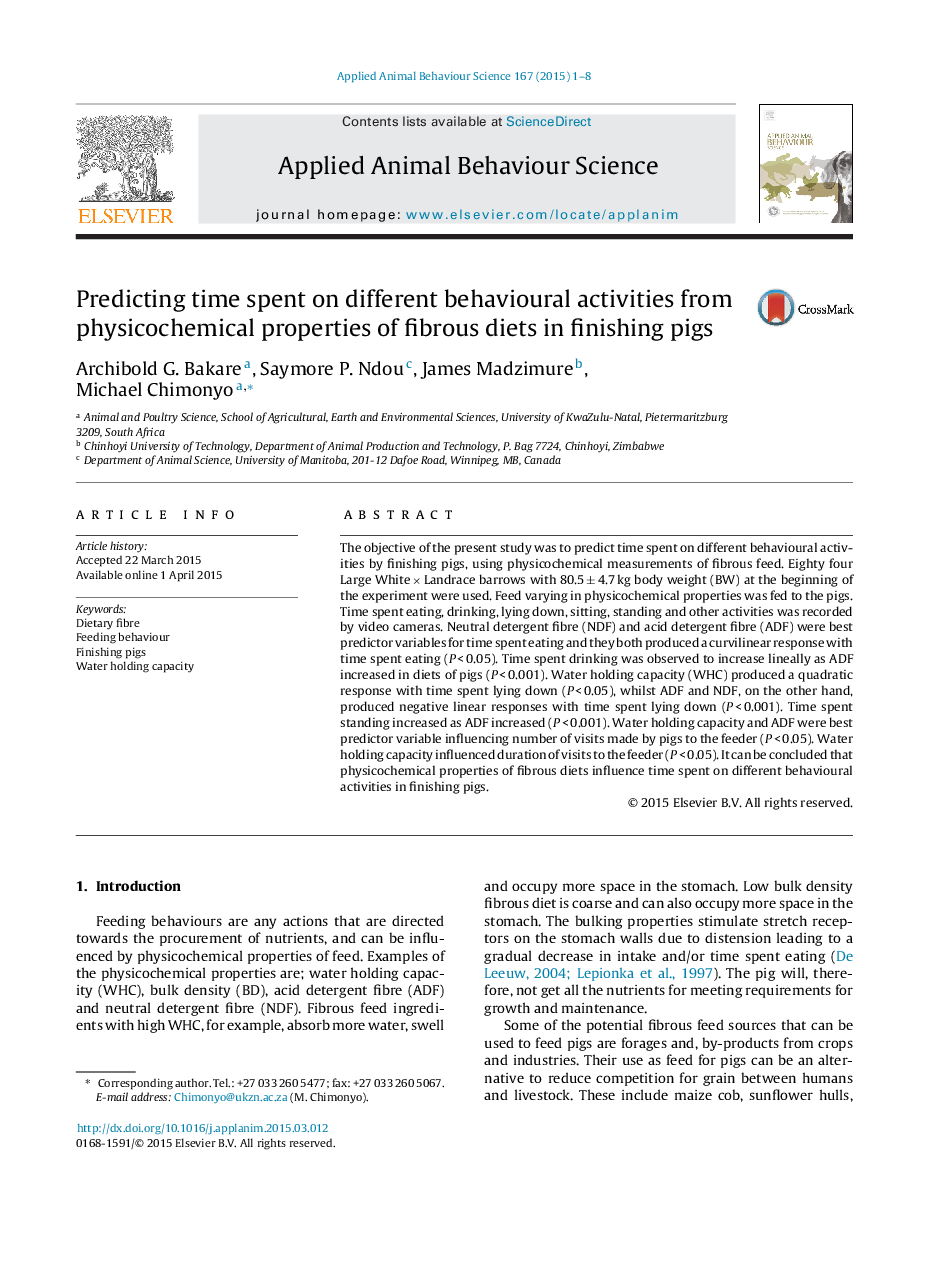| Article ID | Journal | Published Year | Pages | File Type |
|---|---|---|---|---|
| 4522477 | Applied Animal Behaviour Science | 2015 | 8 Pages |
•Time spent on behavioural activities was predicted from properties of fibrous diets.•NDF and ADF were best predictor variables influencing time spent eating.•Water holding capacity influenced number of visits made to the feeder.•Water holding capacity influenced duration of each visit on the feeder.
The objective of the present study was to predict time spent on different behavioural activities by finishing pigs, using physicochemical measurements of fibrous feed. Eighty four Large White × Landrace barrows with 80.5 ± 4.7 kg body weight (BW) at the beginning of the experiment were used. Feed varying in physicochemical properties was fed to the pigs. Time spent eating, drinking, lying down, sitting, standing and other activities was recorded by video cameras. Neutral detergent fibre (NDF) and acid detergent fibre (ADF) were best predictor variables for time spent eating and they both produced a curvilinear response with time spent eating (P < 0.05). Time spent drinking was observed to increase lineally as ADF increased in diets of pigs (P < 0.001). Water holding capacity (WHC) produced a quadratic response with time spent lying down (P < 0.05), whilst ADF and NDF, on the other hand, produced negative linear responses with time spent lying down (P < 0.001). Time spent standing increased as ADF increased (P < 0.001). Water holding capacity and ADF were best predictor variable influencing number of visits made by pigs to the feeder (P < 0.05). Water holding capacity influenced duration of visits to the feeder (P < 0.05). It can be concluded that physicochemical properties of fibrous diets influence time spent on different behavioural activities in finishing pigs.
